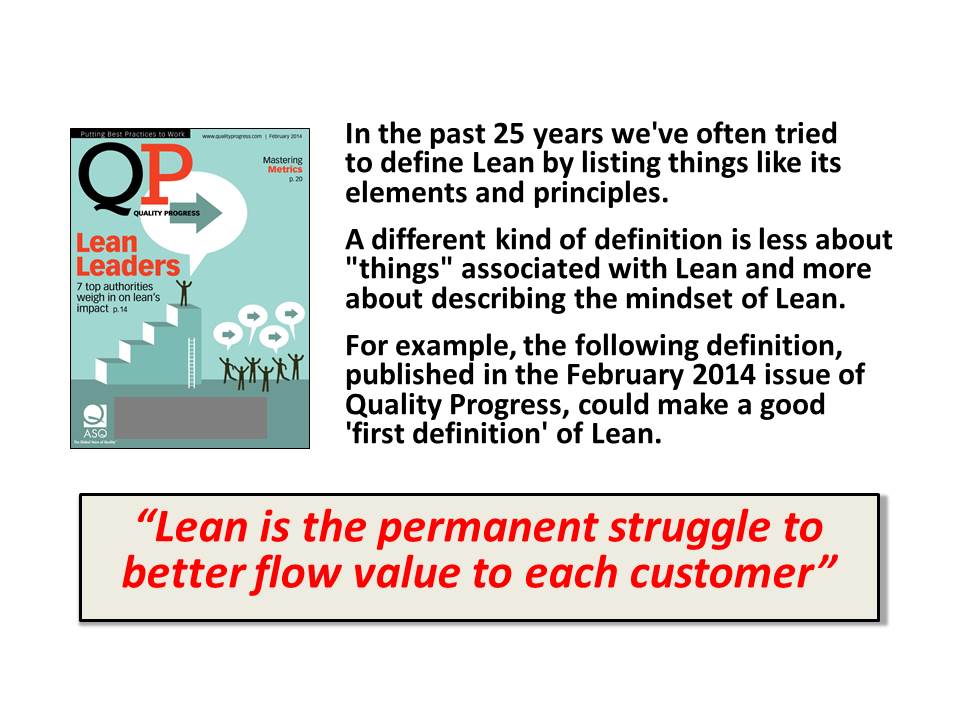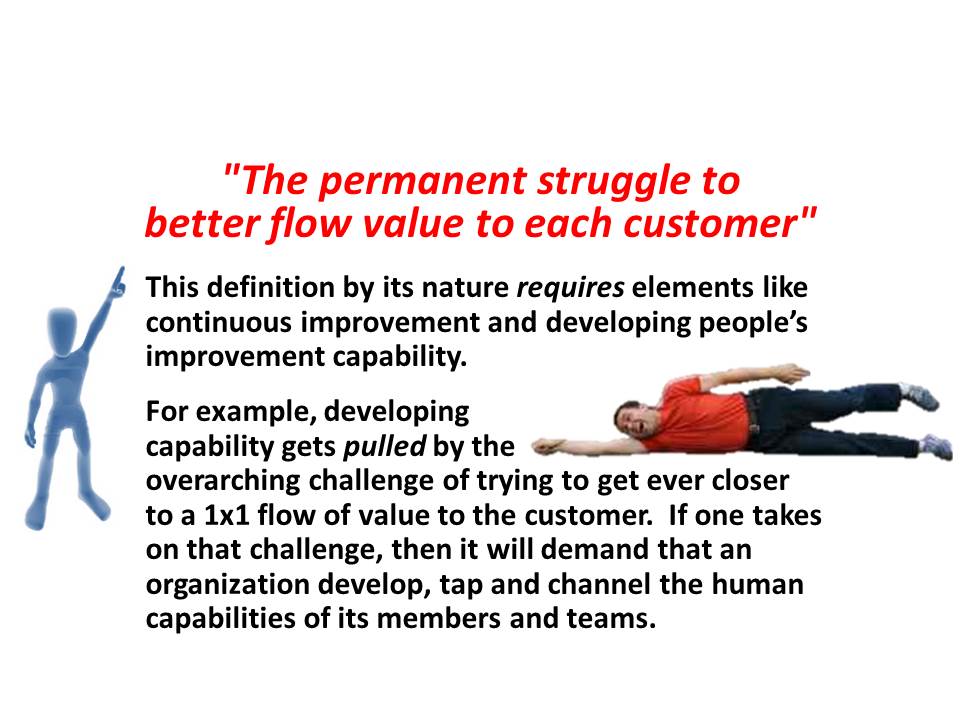What Is Lean about at Its Core?
The beginning of a new year is always a great time for reflection. I write this roughly 25 years since the term “lean” was first coined by Womack, Jones, and Roos in The Machine that Changed the World. We later learned from Womack and Jones in Lean Thinking that the book was largely a description of Toyota.

The beginning of a new year is always a great time for reflection. I write this roughly 25 years since the term “lean” was first coined by Womack, Jones, and Roos in The Machine that Changed the World. We later learned from Womack and Jones in Lean Thinking that the book was largely a description of Toyota.
Mike Rother and I have been asking ourselves, “What would you say in an elevator speech to a stranger who knew nothing about lean?” I recently posed this question on LinkedIn to the Toyota Way group. The usual suspects showed up when participants were asked to define lean with a maximum of three words:
- More for Less
- Chase the Waste
- Quality, Cost, Delivery
- Cost Reduction System
- Logical, Efficient Workflows
- Flow, Synchronization & Leveling
- Process Improvement
To explain our thinking further, Mike and I created a Slideshare presentation to reflect on what lean is about.
Based on the feedback we received, we found most definitions lacking. They focus on methods (synchronization), a specific process (chase the waste), and desired results (quality, cost, delivery). These are all aspects of lean, but Womack and Jones argued it was a new paradigm that fundamentally shifts how we think about the business.
We are currently thinking about it this way:
“Lean is the permanent struggle to better flow value to each customer.”
 Rother & Liker Define “Lean”
Rother & Liker Define “Lean”
It starts with a clear direction, which is a customer having their needs and wants satisfied. It requires capability, which is pulled by the idea of 1×1 flow to each customer, without interruption from the order to the build and delivery processes. That means customers do not sit in waiting rooms, wait on the phone, or watch a spinning wheel on their computers. They are not selecting goods from inventory, but rather having the product they want built for them when they need it, in the amount of time needed. This is an ideal view of the process of satisfying customers, a true north to strive toward.
Since it’s an ideal, the striving is a permanent struggle. We can never achieve perfection, but that is the vision that pulls us. We set challenging goals along the way toward the vision, and each one requires trial and error learning, which is the essence of struggle.
Who should be struggling to achieve these goals? In the ideal, everyone. However, the accountability is in the leadership from the team leader at the front line all the way to the CEO. This is not a vision of projects being conducted by lean specialists. Jim Womack’s reflection on the last 25 years is a cautionary tale:
“Most management decided they could outsource Lean… Please go do it, here’s your budget, and please get some results… It produces something, but it doesn’t produce what we had intended, which was that this would become the core way that managers think.”
James Womack, Planet Lean Interview, UK Lean Summit, 2014
In today’s world of short-term thinking, driven by internal rate of return (IRR) scorecards the finance department provides, it is difficult to strive toward much of anything beyond process efficiency. In his recent Drucker Forum presentation, Professor Clayton Christensen reflected on the limits of efficiency improvements and the need to also pursue strategic breakthrough objectives.
At its core, the lean paradigm doesn’t begin with any specific tools or projects, but seeks to develop a culture of people with the drive and skills to systematically approach new challenges related to better flowing value to each customer. The journey is tough, but it’s also exhilarating, humanizing, and full of surprises. We hope you will have the opportunity to stretch yourselves and work toward your dreams.
 In Other Words, Let’s Not Put the Lean Elements before Customers
In Other Words, Let’s Not Put the Lean Elements before Customers
Dr. Jeffrey Liker is professor of industrial and operations engineering at the University of Michigan and author of The Toyota Way. He leads Liker Lean Advisors, LLC and his latest book (with Gary Convis) is The Toyota Way to Lean Leadership.
Some opinions expressed in this article may be those of a contributing author and not necessarily Gray Construction.
- Category:
- Industry
- Manufacturing
Some opinions expressed in this article may be those of a contributing author and not necessarily Gray.
Related News & Insights
Advanced Technology, Automation & Controls
Four Use Cases for AI's Growing Role in Manufacturing
Industry
November 25, 2024Data Centers
Gray Expands Reach with Dallas Office
Corporate News
November 14, 2024Manufacturing, Construction
The Evolving Role of Electric Vehicles in Sustainable Construction & Design
Industry
October 18, 2024